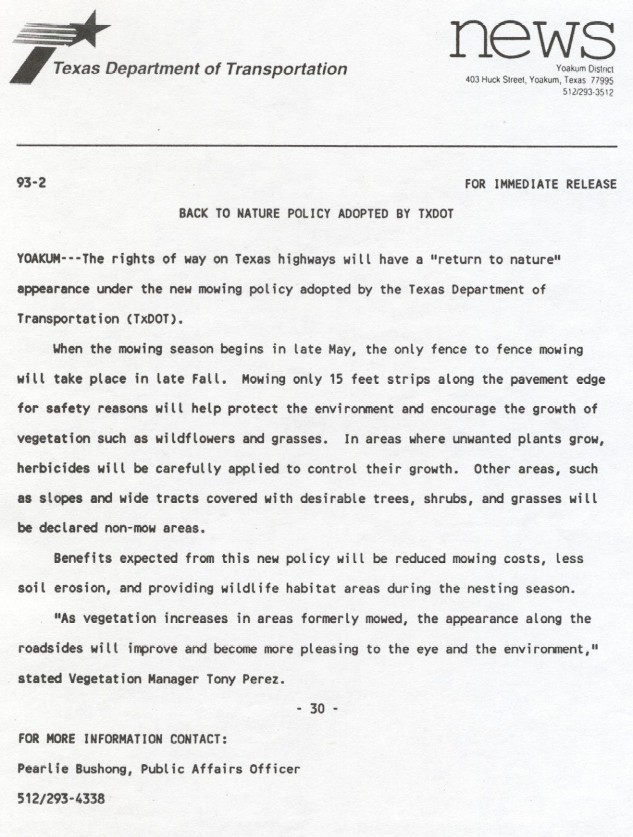Section 3: Changing Attitudes
Anchor: #i999918Wildlife Density and Safety
Studies suggest that roadside management practices have little influence on roadkill. The main factors are the types and conditions of habitats on adjacent lands and associated wildlife population densities on those lands. Deer prefer established travel corridors. Their movement patterns are based on the available cover and the juxtaposition of favored habitats. A greater frequency of road crossings will occur where a highway intersects these preferred habitats. Other species of wildlife that typically use established corridors include raccoons, skunks, opossums, squirrels, coyotes, bobcats and some songbirds. These animals are likewise vulnerable to roadkill. Road crossings at creek and river drainages are good examples of this relationship. A greater frequency of auto collisions would occur in this situation regardless of the roadside vegetation management practices.
Consider placing signs to warn motorists at known or expected wildlife-vehicle collision locations.
Anchor: #i999935Public Perceptions of Unmowed Roadsides
An interview of motorists conducted at a rest stop along an interstate highway in North Dakota in 1971 (Oetting and Cassel) provided some insight into public perceptions of unmowed roadsides. The rest area was at the end of a segment of highway featuring both mowed and unmowed roadsides. Most of the motorists (82 percent) did not notice any difference between the areas. When interviewers pointed out the two conditions, 72 percent stated they preferred the mowed strips, because they were neater. However, when briefed on the effects the mowed roadsides had on wildlife, many respondents wanted to change their answer, because of their positive feelings toward wildlife.
This research suggests that publicity programs and highway signs can increase support of roadside management programs.
Anchor: #i999950Sample News Release
The sample news release (following page) shows one way to explain new mowing practices to the public.
Figure 5-1. Back to Nature Policy Adopted by TxDOT.
